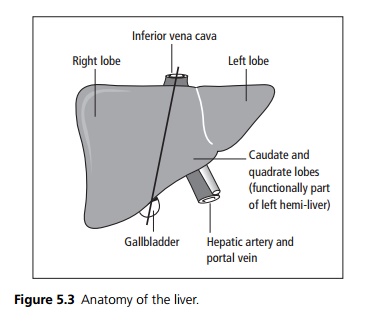Chapter: Medicine and surgery: Hepatic, biliary and pancreatic systems
Liver resection - Investigations and procedures
Liver resection
Liver resection may be indicated in abdominal trauma, and in tumours of
the liver. However, in many cases of malignant tumours only complete removal of
the liver and liver transplantation is curative. Localised metastases may also
be resected.
The liver is composed of several segments, as defined by the blood
supply and drainage, this is important in liver resection. The hepatic artery
and portal vein each have a left and right branch and these supply the left and
right hemi-livers respectively. The left hemi-liver comprises of the left lobe
and the caudate and quadrate lobes; together these form four segments. The
right hemi-liver comprises of the remainder of the right lobe and is also
further divided into four segments (see Fig. 5.3).

This means that right hepatectomy, left hepatectomy and extended right
hepatectomy (right lobe plus caudate and quadrate lobes) or individual segments
may be resected. The liver is first mobilised from its peritoneal attachments.
The appropriate vessels for the segment(s) are ligated and divided before the
segment(s) are dissected away from the remainder of the liver. Careful
identification and ligation of biliary ducts and smaller vessels is required to
reduce blood loss and therefore morbidity and mortality. Drainage is required
postoperatively, to prevent bile from pooling intra-abdominally.
Related Topics